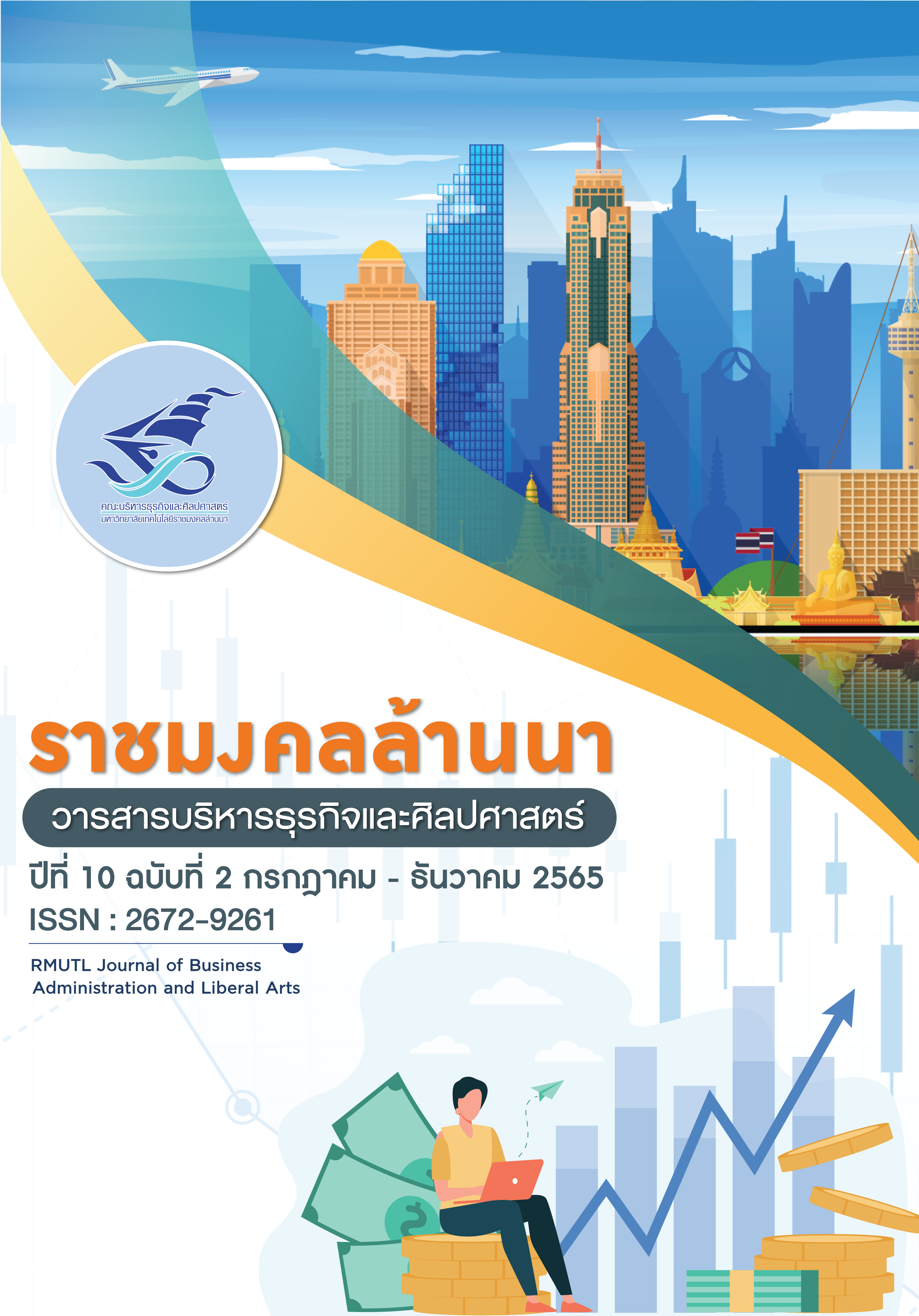The Taxation Process Under the Land and Building Tax Act 2019 Case Study of Bangkok Metropolis
Main Article Content
Abstract
Research on Tax Collection Process under the Land and Buildings Tax Act B.E. 2562 Case Study Bangkok Objectives (1) to study and understand the rules and structure of the Land and Buildings Tax Act B.E. 2562 (2019) of Bangkok (2) to compare the important characteristics of land and building tax and property and land tax (3) to study the problem of tax collection under the Land and Buildings Tax Act, B.E. 2562 (2019) of Bangkok (4)to propose guidelines for the development of a mechanism for collecting land and buildings tax, B.E. 2562 (2019) of Bangkok. scope of qualitative research the population used in the research were experts and experienced in the taxation process of Bangkok Metropolis, including 20 tax payers. Research results (1) The rules for collecting land and buildings tax are not consistent with the current tax collection. which uses the secondary law primarily (2) the collection of land and buildings tax instead of the house and land tax is appropriate and that the land and building tax And property and land taxes are different in practice and tax assessments. Procedures and procedures for collecting house and land tax (3) Problems and obstacles of the Land and Buildings Tax B.E. 2562 (2019) are divided into 4 main problems: 1. The law 2. This Act requires a secondary law. 3. The provisions of this Act are unclear. 4. The calculation of land and building tax causes unfairness affecting people. local government organization and entrepreneurs (4). Management should be integrated between government agencies and the use of modern tools.
Article Details

This work is licensed under a Creative Commons Attribution-NonCommercial-NoDerivatives 4.0 International License.
บทความวิจัยนี้เป็นของลิขสิทธิ์
References
กลุ่มนักวิชาการภาษีอากร. (2557). ภาษีอากรตามประมวลรัษฎากร, กรุงเทพฯ: เรือนแก้วการพิมพ์.
ธิดารัตน์ สืบญาติ. (2558). ความเหลื่อมล้ำด้านการคลังท้องถิ่นของท้องถิ่นในเขตปริมณฑล. วารสารสถาบันพระปกเกล้า, 13(3), 122-144.
นครินทร์ เมฆไตรรัตน์. (2545). ทิศทางการปกครองส่วนท้องถิ่นของไทยและต่างประเทศเปรียบเทียบ. กรุงเทพฯ: มหาวิทยาลัยธรรมศาสตร์.
พระราชบัญญัติภาษีที่ดินและสิ่งปลูกสร้าง พ.ศ. 2562. (2562). ราชกิจจานุเบกษา. เล่ม 136 ตอนที่ 30 ก. หน้า 21-51.
พิชิต รัชตพิบุลภพ และดิเรก ปัทมสิริวัฒน์. (2557). ความเหลื่อมล้ำการคลังท้องถิ่น กรณีศึกษาองค์การบริหารส่วนจังหวัด. วารสารสถาบันพระปกเกล้า, 12(2). 52-76.
เพ็ญพิมล หกสุวรรณ. (2559). ศักยภาพทางการคลังท้องถิ่น: กรณีศึกษากรุงเทพมหานคร. (สารนิพนธ์รัฐศาสตรมหาบัณฑิต บริหารรัฐกิจและกิจการสาธารณะ). กรุงเทพฯ: มหาวิทยาลัยธรรมศาสตร์.
มายามีน หวันฮัซซัน, อามาณีย์ ยะปา และซุไวบะห์ กาโฮง. (2563). ความพร้อมในการจัดเก็บภาษีที่ดินและสิ่งปลูกสร้าตามพระราชบัญญัติภาษีที่ดินและสิ่งปลูกสร้าง พ.ศ. 2562 ขององค์กรปกครองส่วนท้องถิ่นในจังหวัดนราธิวาส. ใน การประชุมหาดใหญ่วิชาการระดับชาติและนานาชาติ ครั้งที่ 11. (24-35). มหาวิทยาลัยหาดใหญ่ จังหวัดสงขลา.
วสันต์ เหลืองประภัสสร์. (2547). ภารกิจหน้าที่องค์กรปกครองส่วนท้องถิ่น. นนทบุรี: ธรรมดาเพรส.
วุฒิพงฒ์ จิตตั้งสกุล. (2557). การเพิ่มประสิทธิภาพในการวางแผนการคลังท้องถิ่น. กรุงเทพฯ: สำนักงานเศรษฐกิจการคลัง กระทรวงการคลัง.
Chen, G., Qi, Y., Liu, F., & Xing, F. (2022). Taxation officers’ grassroots work experience and tax performance: Evidence from China. Journal of Asian Economics, 80. Doi: 10.1016/j.asieco.2022.101463

